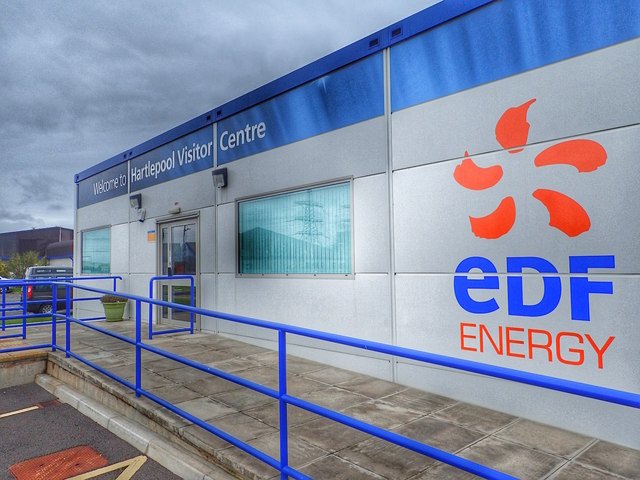The French energy giant may have been dubbed a “really bad” green provider at the start of October by Greenpeace France, which stated that it, along with a number of other domestic energy companies, are not doing enough in terms of their green energy offers, but this has not hindered the unveiling of its third bold initiative in the space of 12 months: the Plan Mobilité Electrique, or Electric Mobility Plan.
In a statement released today, the EDF Group, which is 58% government owned, says that by 2022, it aims to become the leading e-mobility energy company in France, the United Kingdom, Italy and Belgium.
Overall, it has set three targets, and cemented new partnerships, in the four abovementioned countries, to achieve this goal:
- Become the leading power supplier for electric vehicles (EVs) by 2022, which includes supplying power for 600,000 EVs, and would translate into a 30% market share in the four abovementioned countries, says EDF. “Starting in 2019, the Group will present each of these markets with a fully integrated range of offerings including low carbon electricity, a charging solution for all its customers with access to a parking space, and services geared towards optimised charging and use of the vehicle’s battery,” reads the statement;
- Become the biggest public and private charging network operator. Via its subsidiary, Sodetrel, it plans to deploy 75, 000 charging points and provide its European customers with access to 250,000 interoperable terminals by 2022. “EDF will also be developing novel charging solutions for all customers without access to a parking space, in particular through collaborative innovation initiated by EDF New Business and EDF R&D,” continues the statetment; and
- Become Europe’s “smart charging” leader. Here, EDF aims to operate 4,000 smart charging points by 2020.
The new partnerships include the signing of a strategic agreement with NUVVE technology, a Californian start-up based in San Diego, which has developed vehicle-to-grid bidirectional charger software technology, and in which EDF Renewables North America holds a minority interest.
Meanwhile, EDF’s affiliate, Citelum has partnered with German-based start-up Ubitricity, which has developed a solution to convert existing streetlights into charging points. The two have been working together as commercial and technology partners since 2014, says EDF.
With Renault, EDF has formed a partnership under which it will develop shared offerings and experiment with electric mobility solutions in isolated regions and big cities; while it says it is working together with Toyota in the areas of smart charging and hydrogen charging station specifications.
Under a U.K.-based partnership with Nissan International, the two will develop shared offerings in the areas of electric mobility, smart charging, second-life battery use, energy storage and renewable energy sources, says EDF.
Finally, to monitor the development of future battery technologies and charging solutions, as well as the development of mobility services, EDF and Valeo will work together.
Popular content
The other plans
This March, EDF said it intends to become a market leader for storage in Europe. The goal is to deploy around 10 GW of storage capacity by 2035, for an investment of around €8 billion.
In France, it also announced plans last December, to install 30 GW of solar between 2020 and 2035. Responding to questions from pv magazine in January, EDF spokesperson, Clarisse Placidoux, said the solar plan is aligned with the government’s goal of rebalancing France’s energy mix through the expansion of renewable capacity across the country.
Overall, EDF expects to invest €25 billion to implement the “plan solaire,” said Placidoux, while the energy company will also work with industrial and financial partners.
Questionable
As pv magazine editor, Emiliano Bellini recently wrote when covering the Greenpeace France story, the ambiguity of EDF’s renewables plans was highlighted in the 2018 edition of the Nuclear Industry Status Report (WNISR) by French independent consultant specializing in nuclear energy, Mycle Schneider.
The authors of the report said the utility, which is still majority owned by the French government, “seems to live in a different world,” as its envisages “certain closures” of nuclear reactors only starting 2029, while the French government has clearly said it will reduce the share of nuclear power from around 71% currently, to 50% in 2025. This seems to clash against its 30 GW solar plan that is aimed at partly offsetting the loss of this capacity.
This content is protected by copyright and may not be reused. If you want to cooperate with us and would like to reuse some of our content, please contact: editors@pv-magazine.com.



By submitting this form you agree to pv magazine using your data for the purposes of publishing your comment.
Your personal data will only be disclosed or otherwise transmitted to third parties for the purposes of spam filtering or if this is necessary for technical maintenance of the website. Any other transfer to third parties will not take place unless this is justified on the basis of applicable data protection regulations or if pv magazine is legally obliged to do so.
You may revoke this consent at any time with effect for the future, in which case your personal data will be deleted immediately. Otherwise, your data will be deleted if pv magazine has processed your request or the purpose of data storage is fulfilled.
Further information on data privacy can be found in our Data Protection Policy.